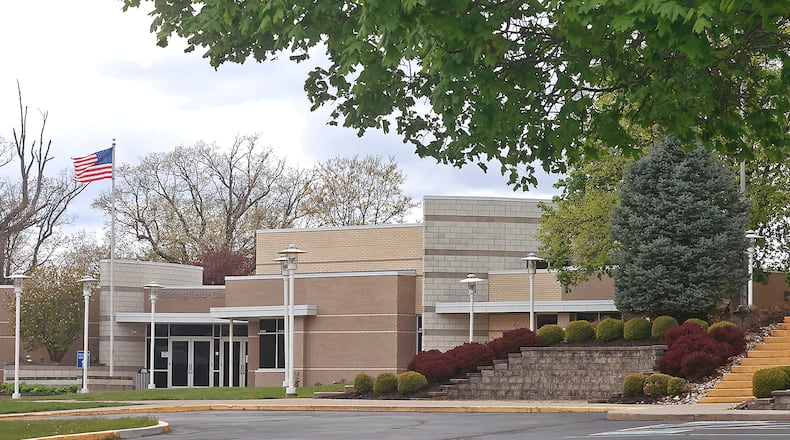Between 2013 and 2023, the school turned away more than 700 students, including 150 for the upcoming school year.
“(This is) why we need to have state-of-the-art facilities that can help more students reach their full potential,” said Superintendent Michelle Patrick.
Administrators have partnered with the Ohio Facilities Construction Commission (OFCC) to help finance the project since the commission provides a portion of state funding for school construction projects that meet its requirements.
Staff, students and community leaders met April 24 to provide input and learn more about the existing facility conditions, student and workforce needs and the OFCC’s process.
The OFCC process started in 2017 when Patrick asked for a review of the assessment completed in 2005.
At that time, she also asked where CTC was on the list of eligible projects to receive OFCC funding.
“The OFCC co-funds only one Joint Vocational School District (JCSD) per year,” she said. “In the fall of 2022, CTC learned that several JCSDs on the funding list were not pursuing OFCC co-funding, and thus CTC had moved to the top of the list” to receive funding.
Patrick said career-technical education has been a “cornerstone of business and industry in Clark County since CTC’s first graduating class of 1967,” and alumni can be found throughout the region in every industry and in all types of positions.
The school has a 95% four-year graduation rate and 95% of CTC students are in college, their chosen career field or enlisted in the military within six months of graduating.
“Providing students with the support and tools to become more career ready, college ready and life ready are what we are all about,” Patrick said. “Imagine what we can do for workforce development in this community with updated facilities and more space to accept more students.”
Tyler Gray, engineering and architectural design student, said CTC is a great place for high school students who want a more hands-on experience and provides them with knowledge for the workforce.
“The job opportunities you can get from it are surreal. The programs here lead to jobs that are desperately looking for good workers, and as a senior you will almost always have an opportunity to get out of the comfort of your own lab and get a job through the school,” he said. “I truly believe CTC is the right place to be.”
Alumnus Tracey Tackett, who attended the meeting, said her time at CTC helped her thrive as a business owner in the community.
“My experience at CTC (JVS) enabled me to develop my passion into purpose when I decided to open Sip & Dipity a decade ago in downtown Springfield,” she said.
Credit: Bill Lackey
Credit: Bill Lackey
Discussions at the meeting focused on the age, condition and shortcomings of the existing facilities, as well as space limitations.
“Schools built in the 1960s and 1970s are not energy-efficient and are constructed of cheaper materials,” said Eric Barge, engineering and architectural design instructor. He said said there are many safety, system and program features the current facility lacks, calling it “extremely inadequate” for today’s technology and student learning environment.
“New building systems will reduce maintenance and operational costs, as well as provide an environment as good as any found in a new school, and we are surrounded by newer facilities in almost every school district here in Clark County,” he said.
Along with the meeting, a recent online survey of almost 50 county community leaders was conducted to provide input. Participants “emphasized student safety and security, ADA accessibility and space flexibility for future programming” as being important to consider in facility planning.
What’s next?
The school will work with Burges & Burges Strategists of Cleveland, Schorr Architects, Community Design Alliance (CDA), Miller Diversified Construction Co. and the OFCC to “ensure it has facilities that better serve Clark County’s current and future needs.”
CTC is waiting on updated cost estimates from the OFCC for renovating versus replacing the buildings. The OFCC will mandate a complete rebuild when the cost to renovate is 66% or more of the cost of new construction.
“OFCC has partnered with several career-tech schools for renovation projects, but not a complete new building project,” Patrick said. “If the OFCC assessment deems CTC in need of a new facility, CTC would be the first OFCC co-funded new build of a career-tech center in Ohio.”
The OFCC bases its contribution to a school’s project on demographics, facility age and property values. If they decided to replace, the agency will fund 62% of the project, and CTC will have to provide the rest.
Patrick said local funding options will be considered after the OFCC report.
The final cost estimates from OFCC are expected by the next community leader planning meeting scheduled for May 23.
For more information or to follow the progress on the project, visit SCCTC.org/FacilityProject.
Credit: Bill Lackey
Credit: Bill Lackey
About the Author




